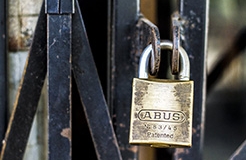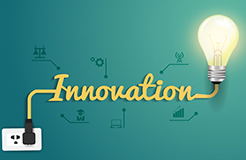Did not receive verification mail? Please confirm whether the mailbox is correct or not Re send mail

Vapor
- 2019-08-20 13:33:37
What We Learned From and What We Can Do With Remarks of Director Lancu
Mathematical concepts like mathematical relationships, formulas, and calculations
Certain methods of organizing human interactions, such as fundamental economic practices commercial and legal interactions; managing relationships or interactions between people; and advertising, marketing, and sales activities
Mental processes, which are concepts performed in the human mind, such as forming an observation, evaluation, judgment, or opinion.

What we learned from Remarks delivered at the IPO Association 46th Annual Meeting by Director Andrei Lancu and how we can apply what we learned to pass the subject matter eligibility test in China
About 10 days ago Director Andrei Lancu delivered a keynote speech at the Intellectual Property Owners (IPO) Association 46th Annual Meeting to update audiences with new development at USPTO.
Before we get to our main topic, it is harmless to review what Director Lancu has said on the meeting. Among other things, Director Lancu particularly came up with a specific proposal for Section 101—patentable subject matter.
As Director Lancu underscored, more work needs to be done on the “abstract idea” exception. In particular, to draw distinctions between something inventive and something abstract or between something indefinite, not enabled or poorly-described and something abstract seems to be “urgent”, as these distinctions are more and more blurry. As the Director said, “……People should know up front. If nothing else, for the sake of a predictable ecosystem, let’s be transparent.”
Sure, be transparent. However over the past few years, ever since theAlice case, rather than getting a more transparent guidance about what these “abstract ideas” are, US applicants has become confused in this regard. Therefore it is the very time, as Director Lancu addressed, to make everything transparent.
Compared with legacy subject matter eligibility test for products and processes including step 1, step 2A and step 2B, the new subject matter eligibility test focuses on changes in terms of step 2A and step 2B, especially the latter one.
Specifically, the new test tries hard on categorizing the exceptions—and indeed naming them for step 2A.
In summary, concerning step 2A, the new test would synthesize “abstract ideas” as falling into the following three categories:
Furthermore, concerning step 2B, the requirement “significantly more” has been replaced by “directed to”. Specifically, the examiners would be instructed to examine whether a claim integrates the recited exception into a practical application, in the case that the claim is thought belonging to one of the three categories. In other words, whether or not these abstract idea inventions, as USPTO examiners are instructed to scrutinize, can be used, applied, or workable in a practical application situation.
As such, we can safely draw a conclusion that changes concerning step 2A and step 2B, as Director Lancu expects, will make things easier both for examiners and for applicants than without changes, as these changes would definitely help drive more predictability back into the analysis while remaining true to the case law that gave rise to these judicial exceptions in the first place. Needless to say, to have a judicial exception, with clear categorization, being integrated into a practical application is out of question more transparent and also easier than to prove a claim at issue does recite additional elements that amount to significantly more than the judicial exception.
Then what do we learn from the above? First of all, the number of US applications with Section 101—patentable subject matter rejections would be significantly reduced as a result of this update. Secondly, other than mathematical concepts, methods of organizing human interactions, and mental processes, a majority of US applications would be little likely to be rejected under Section 101. Thirdly, even though falling into any one of the above three certain categories, a majority of US applications can still survive rejections under Section 101, as long as these applications have been casted into one or more practical applications. And the truth is that, the more practical applications you can contemplate, the better off your US application would turn out to be.
Next here comes another question. “What if my US application passes USPTO’s new subject matter eligibility test, but I am not certain if it can alike survive the subject matter eligibility test in China?”
As an experienced patent attorney in China, especially the one who has been dealing with the subject matter eligibility issue in China for more than 10 years, I do think that I can help you learn what to do with what you have learned from Director Lancu’s speech. Here come my comments regarding similarities and differences in terms of subject matter eligibility test in these two countries.
SIMILARITIES
Within the framework of the new subject matter eligibility test proposed by Director Lancu, both USPTO and its counterpart association CNIPA share many things together.
For example, as regards Step 2A, Chinese examiners would very likely to say No to the listed three categories as well. It is always worth being noted that the rejection rate for inventions related with methods of organizing human interactions is astonishingly high, even if these inventions may appear work well in a certain practical application situation.
Further, as regards Step 2B, being “directed to” a practical application is also underscored by CNIPA for passing the subject matter eligibility test in China. For example, a pure mathematical algorithm in a claim can hardly be allowed by Chinese examiners. However, if you can associate those independent variables and dependent variables recited in the mathematical algorithm with real physical elements in a practical application, then that conversion/association would be regarded somehow as being “directed to” a practical application by Chinese examiners.
All in all, it is definitely clear that neither USPTO nor CNIPA is expected to continue to mush subject matter with the conditions of patentability (novelty and non-obviousness) any more. Then subject matter and patentability may go to their own lane in both countries.
DIFFERENCES
Does it mean there would be no differences between these two countries in terms of subject matter eligibility test? No way. In practice, as regards Step 2B, even though both countries highlight the significance of being “directed to” a practical application, range of allowable practical applications has been reduced to a quite limited one in China. Basically speaking, “industrial applications” are out of question one of them. In other words, as for economic practices, advertising, marketing, and sales activities, or human observation, evaluation, judgment activities, the outcome to pass the subject matter eligibility test in China still looks gloomy now.
Source: iprdaily.com
Author:Tom. J. YANG Partner/Patent Attorney/Attorney at Law/Patent Litigation Agent of Dragon Intellectual Property Law Firm
Editor:Vapor
- I also said the two sentence
- Also you can enter 140words






